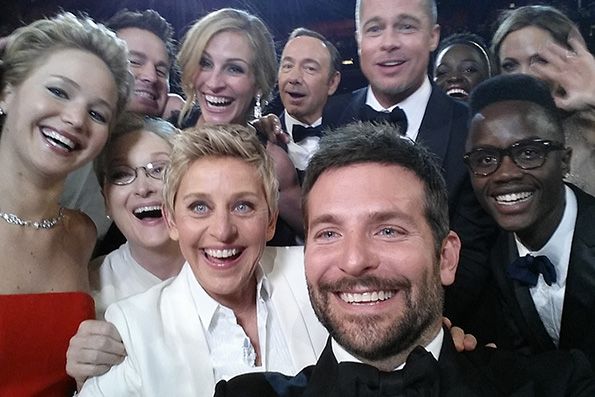By Barry Moltz
On Oscar night, Ellen DeGeneres snapped a selfie with a group of movie stars. Moments later, that posted picture brought Twitter to a halt and became the most tweeted picture with over 33 million retweets across the Web. There is now even a selfie app, Uturn that can put anyone in that famous photo. Other high-profile selfies are popping up everywhere, including one of Pope Francis and President Obama. If you think it's a passing trend, think again: "Selfie" was named the 2013 word of the year by Oxford English Dictionary.

According to Brand Growth Management, this word has been around since 2004 when the selfie hashtag first appeared on Twitter. Taking this type of self-portrait became easier when in 2010, Apple introduced a front facing camera on its iPhone.
Since visuals continue to drive customer engagement, small businesses need to take advantage of the selfie phenomenon. Sharing these types of photos can help a company connect its brand identity to customers. How can you use selfies in your marketing strategy?
Show personality
Customers traditionally rank authenticity as a top trait they seek when doing business with any company. Selfies by their very nature are personal. Their content usually says a lot about the people who work at the company. They are much more effective for connecting to customers than posed photographs. For example, a selfie of employees at the office or a related event can be a powerful message that says, "We like to work here, and we support the company's mission."
Become human
It is much easier to connect with a person than an abstract concept like a company. Posting employee selfies shows that there are real people behind the brand. This helps create a powerful emotional connection for anyone considering the company's product. Customers value transparency, and selfies can accomplish this. For example, when Nextiva posts selfies of its service team, customers know they are talking to real people. Remember, prospects buy from whom they know, like and trust. Selfies can strengthen these factors.
Give social proof
When customers post selfies with a company's product, this is the social proof or recommendation that other prospects crave. It acts as a perfect advertisement, since it's not from the company. Logically, customers do not pose with products they do not like. For example, Scott Jordan at Scottevest uses these types of photographs in his marketing promotion as social proof of his company's success.
Share a laugh
Humour can be used to promote almost any brand, and funny photos have a greater chance of spreading around the Web. Ask employees and customers to ham it up when they are in front of a camera. Encourage customers to submit selfies by having a contest and rewarding them with prizes. Tie these photos to a Twitter or Instagram hashtag or have a specific Facebook page or Pinterest board for the contest.
The selfie risk
Pictures can get posted that a company doesn't want associated with its brand. While you can edit selfies posted to your company's site and social media pages, you can't control what other people are posting to their sites. Your best defense is to be aware of what's out there.
Via Open Forum












